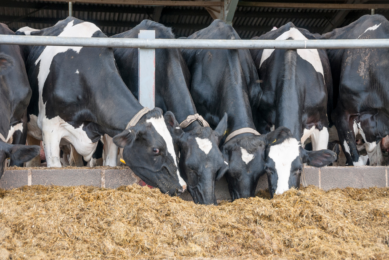Claims on feed materials: A review

The current labelling regulatory rules for feed materials might be limited and contains possible fuzzy areas, especially when highlighting health benefits on labels with claims. Here we look at how a French feed company deals with this proactively and defines reliable best practices.
To market feed materials or compound feed (so not feed additives and premixes), it should comply with the EU Regulation 767/2009 (regulation on marketing and use of feed). This legal framework includes rules on how to label these products. This regulation gives also the opportunity to feed business operators to develop their proper information with voluntary labelling. A voluntary health claim can for example could be additional information on the nutritional properties, or on the health benefits of the feed material (energy value, presence or absence of a specific substance in the feed for example). The competent authorities encourage feed business sectors to develop codes of good labelling practices in order to assist feed manufacturers to implement feed claims and manage future controls with serenity. On the other hand, feed materials and compound feed producers can be proactive by providing scientific information to their customers, in order to support potential health claims on feedstuff labels, based on the usage of their products. This article explains how Tereos has built a series of dossiers substantiating the health claims of its feed material Profeed (prebiotic fructo-oligosaccharides).
Permitted claims
Current feed marketing regulation, surprisingly, does not give precise regulatory definition of what a claim is. Nevertheless, it clarifies feed business operators by namely listing following permitted claims:
- Claims on the presence or absence of a substance in the feed,
- Claims on specific nutritional characteristic or process,
- Claims on specific function related to specific nutritional characteristic or process and 4) Claims concerning optimisation of nutrition and support or protection of physiological conditions.
This positive list is completed by 2 conditions of ineligibility for a claim for feed material and compound feed:
- Label or presentation cannot claim that the feed product will prevent, treat or cure a disease (except for coccidiostats and histomonostats as authorised under Regulation (EC) No 1831/2003) and
- Claim cannot be done if the feed product has a particular nutritional purpose, as provided in amended Commission Directive 2008/38/EC, unless it satisfies the requirements laid down therein. This latter Directive is about marketing of “dietetic” feed and establishes the positive list of intended uses of animal feedingstuffs for particular nutritional purposes, describing conditions of use and where appropriate special labelling requirements.
The other conditions to for a label to bear a claim are not specific and stick with common principles, generally applicable for labelling and presentation in feed such as that the claim must be objective, truthful, understandable by the user of the feed and not misleading.
Implementation subject to interpretation
Those regulatory provisions for claims on feed materials and compound feed remain rather general and are not deeply detailed in current European feed legislation. Consequently their implementation could be subject to interpretations, leading to sharp debates in the feed sector, or even worse, legal uncertainty with possibly different positions by competent authorities of Member States who control compliance of feed products on their national territory. This situation may conflict with the European market, trade globalisation, where there has been a growing need for harmonised rules across European Union. To prevent such a situation and to support fair competition between feed stakeholders, authorities encourage the development of Community Codes of good labelling practices. The purpose of the Codes is to assist the feed industry in the interpretation of voluntary labelling provisions, their practical implementation and to manage future controls with serenity. According to article 26 of feed marketing regulation, these Codes must be established in collaboration with European and/or national authorities and with consultation of concerned stakeholders in feed business sector.
Fediaf and Fefac take action
So in full compliance with European feed legislation, the European Pet Food Industry Federation (Fediaf) addressed feed labelling requirements including further details on claims, questions on wording, substantiation, in a useful and practical tool. Their Code of Good Labelling Practice for Pet Food was validated as the first European Code by European Commission in December 2011. Another Labelling Code as mentioned in feed marketing regulation is going to be prepared for compound feed for food producing animals by the European Feed Manufacturers’ Federation (Fefac) and the organisation representing European farmers and agricultural cooperatives (COPA-COGECA). This document is still under discussion with relevant authorities.
The great advantage of these Codes is to allow for a harmonised approach on how to implement and label claims within a concerned feed sector across the European Union. Common sectorial rules are therefore provided in line with European feed law and industry practice, what can be followed by feed operators on a voluntary basis.
Questions about use of claims for feed materials
Taking into account this regulatory environment, most feed business operators support modern labelling practices like the use of claims. However they face many questions and considerable uncertainty when it comes to the use of claims for feed materials.
Proactive in own methodology
“Many of our customers and partners are contacting us for more information about claims which can be used for feed materials.” explains Daniel Cochet from Tereos. “For example, together we discuss their product positioning and labelling. They want to evaluate the nutritional properties and the claim they could use.” Tereos is using its own approach to build and back up the claims. In a European regulatory environment where freedom is given to feed operators for innovative labelling, Tereos has proactively launched a rational approach to be aligned with feed claim labelling provisions of regulation (EC) n°767/2009. In order to support and frame the usage of the health claims applicable to its feed material Profeed® (prebiotic short-chain Fructo-oligosaccharides from sucrose), Tereos has built a series of scientific dossiers defining strict rules based on science and experience in this domain. They support feed manufacturers for optimal use of the feed material in their feed product and display comprehensive benefits for the animals. They provide scientific substantiation for competent authorities when deemed necessary.
Each health claim is supported by a scientific dossier, which both characterises the feed material and provides a large amount of robust scientific data on the claim and its related health benefits.
Feed material is characterised and evaluated according to 3 key criteria:
- Composition known and guaranteed: Profeed® is composed of a strict and reliable distribution of short-chain Fructo-oligosaccharides GF2, GF3 and GF4. It is a guarantee of security and consistency for nutritional performances.
- Effective dose: Efficiency of the short-chain Fructo-oligosaccharides has been evaluated at different doses to determine the most cost effective inclusion rate in the diet.
- Analysis in feed product: This allows easy control of required dose necessary to contribute to the claimed beneficial effect.
Tereos applies 4 rules guaranteeing robust scientific substantiation.
- Our experts carry out an exhaustive literature review with studies managed at company level but also including studies publicly available and published by other stakeholders. For the sake of impartiality, all available publications are screened, whatever their conclusions.
- Tereos implements its own scientific studies in collaboration with recognised research institutes and universities. These studies follow clear methodology, defined protocol for trials, guaranteeing their validity and robustness.
- At least 2 studies with positive outcomes must demonstrate the claimed effect on the targeted animal species and the concerned physiological conditions.
- Scientific assessment on the health benefit is done not only for the targeted animal species but it is also extended to the other animal species when available.
The most recent evaluation techniques are applied to ensure that the relation between the feed material and the claim effect is properly established. This allows the effect of the product to be clearly measurable and its magnitude to be discussed. The best techniques for this exercise are:
- Evaluation focuses on biomarkers which are carefully chosen and on good knowledge of physiological mode of action.
- When it is possible, meta-analysis is combined with the use of appropriate statistical tools. This step allows integrating both significant and non-significant effects in the scientific evaluation.
- When meta-analysis is not possible, an integrative approach is made, by comparing all the intra and inter-data.
- Another important point is to make the relationship between the effect and the product, then, to have a mechanistic approach. To achieve this crucial part, further bibliography assessment is made and can include in vitro studies or studies on other species than that targeted. New powerful methodologies like metagenomics, metabolomics, that may give relevant scientific based insights, are also explored and monitored.











